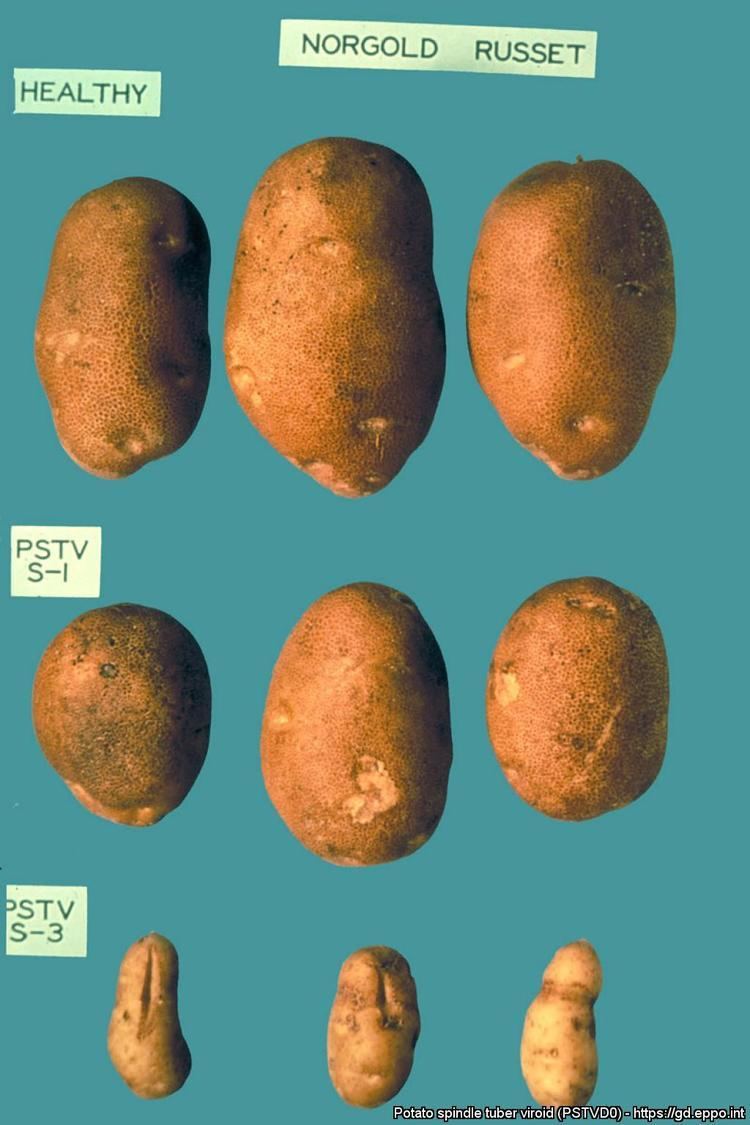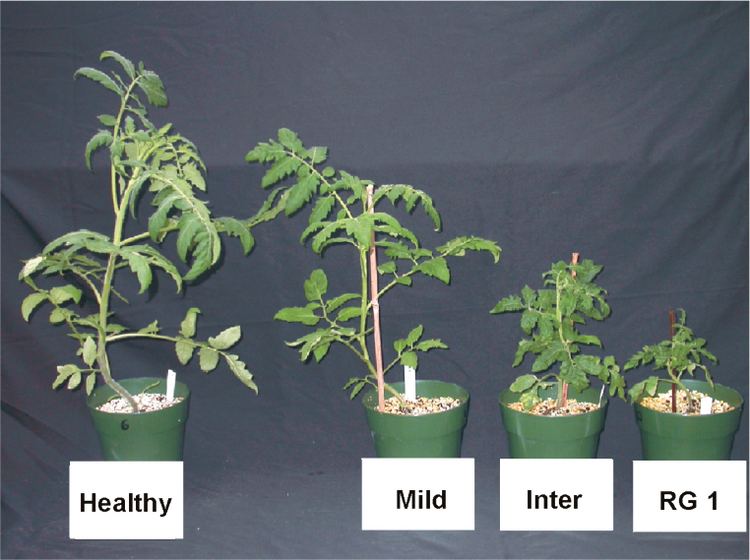Group Viroids Rank Species | Higher classification Pospiviroid | |
 | ||
Similar Pospiviroidae, Avocado sunblotch viroid, Potato leafroll virus, Peach latent mosaic vi, Hop stunt viroid | ||
The Potato spindle tuber viroid ("PSTVd") was the first viroid to be identified. PSTVd is a small, circular RNA molecule closely related to the chrysanthemum stunt viroid. Present within the viroidal RNA is the Pospiviroid RY motif stem loop. The natural hosts are potatoes (Solanum tuberosum) and tomatoes (Solanum lycopersicum). All potatoes and tomatoes are susceptible to PSTVd and there is no form of natural resistance. Natural infections have also been seen in avocados and infections in other solanaceous crops have been induced in the laboratory.
Contents

Strains and their symptoms

Different strains of PSTVd exist and symptoms range from mild to severe. Mild strains produce no obvious symptoms. Symptoms in severe strains are dependent on environmental conditions and are most severe in hot conditions. Symptoms may be mild in initial infections but become progressively worse in the following generations. Common symptoms of severe infections include colour changes in the foliage, smaller leaves and spindle like elongation. Sprouting also occurs at a slower rate than in unaffected potatoes. Infected tomatoes are slower to show symptoms which include stunted growth with a ‘bunchy top’ caused by shortened internodes. Leaves become yellow or purple and often become curled and twisted. Necrosis eventually occurs in the veins of the bottom and middle leaves and the top leaves don’t die but are reduced in size. Fruit ripening is also affected leading to hard, small, dark green tomatoes.

Long distance spread of PSTVd usually occurs via infected seeds but transmission via aphids (Myzus persicae) also occurs but only in the presence of PLRV (potato leaf roll virus). Mechanical transmission also occurs once it has been introduced to an area.
Primary and secondary structure of PSTVd
PSTVd comprises 359 nucleotides.
The nucleotides that are highlighted are found in most other viroids.



